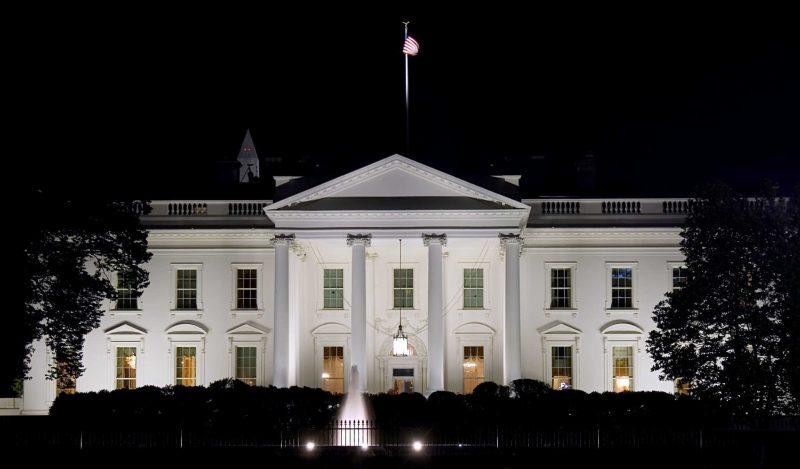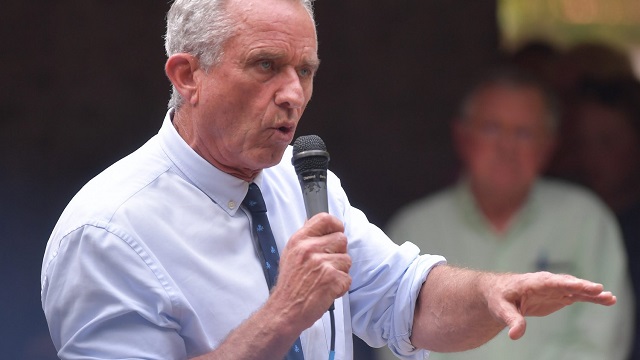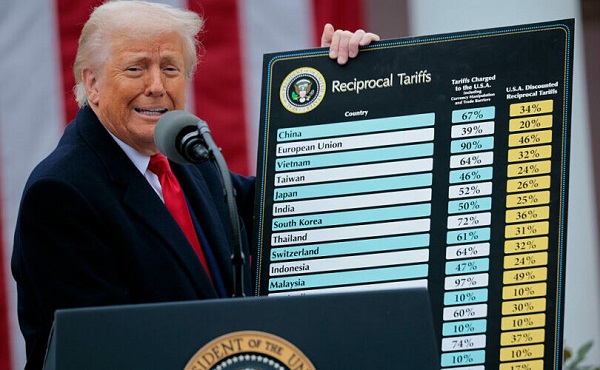Brownstone Institute
The Trouble with Testing

From the Brownstone Institute
Deborah Birx is at it again, urging mass testing for the detection of bird flu. She wants cows and dairy workers examined to ferret out asymptomatic infections and exposures in animals and people. We have the technology so why not use it, she demands to know. We are making the same mistake we made with Covid early on, she argues.
The role of testing is relatively uncontroversial but it probably should be. Early on in the Covid crisis, though completely against the lockdowns, I was an enthusiast for testing simply because I thought doing so would overcome the epistemic void that was driving public panic.
If you are scared of a disease and have no means to discover whether or not you have it, what is your choice but to hop around in a frenzy and comply with every edict? That was my thinking in any case. We live and learn.
What’s left out of the testing issue is the great question of why. Is it track, trace, and isolate? That has been proven impossible – and long known to be impossible – in the case of a fast-spreading and fast-mutating respiratory virus with a zoonotic reservoir. They tried it anyway with many states quickly hiring tens of thousands of contact tracers.
The iTunes and Google app stores had contact tracing programs you could download. That way if you came close to someone who had tested positive, you would be alerted. It worked like a digital leper’s bell. In fact, even now, the airlines are still doing Covid contact tracing for flying in and out of the country.
Another possible rationale is likely the one in the mind of Birx. She was formed in the AIDS era where the goal was zero infections. Early on, she was a proponent of zero Covid and made that very clear. She is a virus exterminationist: every policy is structured to drive infections, cases, and even exposure to zero, despite the utter impossibility of this goal.
Another possible rationale would be to discern early intervention therapies for people who need them. But realizing that goal is contingent on two other conditions: having therapeutics available and knowing with some sense of confidence that an asymptomatic infection is certainly going to get worse.
Think of the movie Contagion (2011) in this way. It was a killer virus that you get and get worse and then die, all rather quickly. In the movie, the job of the health authorities was always to find the infected and notify everyone with whom they had contact. By the way, this didn’t even work in the film but we are presented with some impressive disease forensics that ended up isolating patient zero.
Again, the question beckons: why are we doing all this? The goals of stopping the spread, driving exposure to zero, and actually treating the sick (if they are sick versus just exposed) are certainly in tension with each other. If you are going to embark on an elaborate and invasive scheme to find and isolate every instance of the pathogen, it’s a good idea to know what precisely you are trying to achieve with the effort. No interviewer has been smart enough to ask this fundamental question of Birx.
And keep in mind that Birx does not want to limit testing to people. She wants cows and chickens tested too, and there’s no particular reason to limit it to that. It could include every member of the animal kingdom, every four-legged creature, and every fish and foul. The expense would be enormous and truly unthinkable, driving the cost of meat production sky-high, especially given the inevitable slaughters that would be mandated.
This is made worse, as we learned last time, by PCR tests that can be set at any cycle rate to discover the mere presence of a virus in just about anything. The last time, this led to unwarranted assumptions of contagiousness, up to 90 percent in 2020, as reported by the New York Times. Because there was and is so much confusion about this piece, let’s quote it directly.
The PCR test amplifies genetic matter from the virus in cycles; the fewer cycles required, the greater the amount of virus, or viral load, in the sample. The greater the viral load, the more likely the patient is to be contagious.
This number of amplification cycles needed to find the virus, called the cycle threshold, is never included in the results sent to doctors and coronavirus patients, although it could tell them how infectious the patients are.
In three sets of testing data that include cycle thresholds, compiled by officials in Massachusetts, New York and Nevada, up to 90 percent of people testing positive carried barely any virus, a review by The Times found.
On Thursday, the United States recorded 45,604 new coronavirus cases, according to a database maintained by The Times. If the rates of contagiousness in Massachusetts and New York were to apply nationwide, then perhaps only 4,500 of those people may actually need to isolate and submit to contact tracing.
While it’s not quite precise to say that the PCR tests generate 90% false positives, it is correct to say that in those tests looked at by the NYT at the height of the pandemic, 90 percent of positive results did not warrant concern at all. They should have been thrown out entirely.
That’s a serious problem for the test, track, trace, and isolate regime that Birx is proposing. Is it any wonder that people today are highly suspicious of this entire idea? Rightly so. Nothing is to be gained by throwing the whole of society into a mysophobic panic when the tests themselves are so poor at discerning the difference between a mild exposure and a medically significant case.
For more on this, see my interview with Jay Bhattacharya, who was onto this problem very early on.
Indeed it was precisely the PCR tests that created this wild confusion between an exposure, an infection, and an actual case. The word case in the past had been reserved for someone actually sick and needing some medical intervention. For reasons never explained, that entire language was blown up, such that OurWorldinData suddenly started listing every documented PCR exposure as a case, creating the feeling of disaster when actually life was functioning entirely normally. The better the authorities got at testing, and the more universal the testing mandates, the sicker the population seemed to be getting.
This all depends on the conflation of exposure, infection, and cases.

Once the disease panic is created, what’s left to do about it remains entirely within the realm of public health authorities. Already last week, the authorities ordered 4 million chickens to be slaughtered. Already more than 90 million birds have been killed since 2022.
As Joe Salatin points out: “The policy of mass extermination without regard to immunity, without even researching why some birds flourish while all around are dying, is insane. The most fundamental principles of animal husbandry and breeding demand that farmers select for healthy immune systems. We farmers have been doing that for millennia. We pick the most robust specimens as genetic material to propagate, whether it’s plants, animals, or microbes.”
This is precisely where this obsession with testing gets us. Whether it is animals or humans, the power of government to compel disease tests and act on the results has led to destructive policies in every instance. You might think we would have learned. Instead, reporters just let Birx ramble on without asking fundamental questions about severity, purpose, viability, or consequences.
There has probably in the history of government never been a more presumptuous aspiration than for bureaucrats to seek to manage the whole of the microbial kingdom. But that is where we are. There’s never been a better time for every citizen of a would-be free nation to proclaim: my biology is none of the government’s business.
Brownstone Institute
If the President in the White House can’t make changes, who’s in charge?

From the Brownstone Institute
By
Who Controls the Administrative State?
President Trump on March 20, 2025, ordered the following: “The Secretary of Education shall, to the maximum extent appropriate and permitted by law, take all necessary steps to facilitate the closure of the Department of Education.”
That is interesting language: to “take all necessary steps to facilitate the closure” is not the same as closing it. And what is “permitted by law” is precisely what is in dispute.
It is meant to feel like abolition, and the media reported it as such, but it is not even close. This is not Trump’s fault. The supposed authoritarian has his hands tied in many directions, even over agencies he supposedly controls, the actions of which he must ultimately bear responsibility.
The Department of Education is an executive agency, created by Congress in 1979. Trump wants it gone forever. So do his voters. Can he do that? No but can he destaff the place and scatter its functions? No one knows for sure. Who decides? Presumably the highest court, eventually.
How this is decided – whether the president is actually in charge or really just a symbolic figure like the King of Sweden – affects not just this one destructive agency but hundreds more. Indeed, the fate of the whole of freedom and functioning of constitutional republics may depend on the answer.
All burning questions of politics today turn on who or what is in charge of the administrative state. No one knows the answer and this is for a reason. The main functioning of the modern state falls to a beast that does not exist in the Constitution.
The public mind has never had great love for bureaucracies. Consistent with Max Weber’s worry, they have put society in an impenetrable “iron cage” built of bloodless rationalism, needling edicts, corporatist corruption, and never-ending empire-building checked by neither budgetary restraint nor plebiscite.
Today’s full consciousness of the authority and ubiquity of the administrative state is rather new. The term itself is a mouthful and doesn’t come close to describing the breadth and depth of the problem, including its root systems and retail branches. The new awareness is that neither the people nor their elected representatives are really in charge of the regime under which we live, which betrays the whole political promise of the Enlightenment.
This dawning awareness is probably 100 years late. The machinery of what is popularly known as the “deep state” – I’ve argued there are deep, middle, and shallow layers – has been growing in the US since the inception of the civil service in 1883 and thoroughly entrenched over two world wars and countless crises at home and abroad.
The edifice of compulsion and control is indescribably huge. No one can agree precisely on how many agencies there are or how many people work for them, much less how many institutions and individuals work on contract for them, either directly or indirectly. And that is just the public face; the subterranean branch is far more elusive.
The revolt against them all came with the Covid controls, when everyone was surrounded on all sides by forces outside our purview and about which the politicians knew not much at all. Then those same institutional forces appear to be involved in overturning the rule of a very popular politician whom they tried to stop from gaining a second term.
The combination of this series of outrages – what Jefferson in his Declaration called “a long train of abuses and usurpations, pursuing invariably the same Object” – has led to a torrent of awareness. This has translated into political action.
A distinguishing mark of Trump’s second term has been an optically concerted effort, at least initially, to take control of and then curb administrative state power, more so than any executive in living memory. At every step in these efforts, there has been some barrier, even many on all sides.
There are at least 100 legal challenges making their way through courts. District judges are striking down Trump’s ability to fire workers, redirect funding, curb responsibilities, and otherwise change the way they do business.
Even the signature early achievement of DOGE – the shuttering of USAID – has been stopped by a judge with an attempt to reverse it. A judge has even dared tell the Trump administration who it can and cannot hire at USAID.
Not a day goes by when the New York Times does not manufacture some maudlin defense of the put-upon minions of the tax-funded managerial class. In this worldview, the agencies are always right, whereas any elected or appointed person seeking to rein them in or terminate them is attacking the public interest.
After all, as it turns out, legacy media and the administrative state have worked together for at least a century to cobble together what was conventionally called “the news.” Where would the NYT or the whole legacy media otherwise be?
So ferocious has been the pushback against even the paltry successes and often cosmetic reforms of MAGA/MAHA/DOGE that vigilantes have engaged in terrorism against Teslas and their owners. Not even returning astronauts from being “lost in space” has redeemed Elon Musk from the wrath of the ruling class. Hating him and his companies is the “new thing” for NPCs, on a long list that began with masks, shots, supporting Ukraine, and surgical rights for gender dysphoria.
What is really at stake, more so than any issue in American life (and this applies to states around the world) – far more than any ideological battles over left and right, red and blue, or race and class – is the status, power, and security of the administrative state itself and all its works.
We claim to support democracy yet all the while, empires of command-and-control have arisen among us. The victims have only one mechanism available to fight back: the vote. Can that work? We do not yet know. This question will likely be decided by the highest court.
All of which is awkward. It is impossible to get around this US government organizational chart. All but a handful of agencies live under the category of the executive branch. Article 2, Section 1, says: “The executive Power shall be vested in a President of the United States of America.”

Does the president control the whole of the executive branch in a meaningful way? One would think so. It’s impossible to understand how it could be otherwise. The chief executive is…the chief executive. He is held responsible for what these agencies do – we certainly blasted away at the Trump administration in the first term for everything that happened under his watch. In that case, and if the buck really does stop at the Oval Office desk, the president must have some modicum of control beyond the ability to tag a marionette to get the best parking spot at the agency.
What is the alternative to presidential oversight and management of the agencies listed in this branch of government? They run themselves? That claim means nothing in practice.
For an agency to be deemed “independent” turns out to mean codependency with the industries regulated, subsidized, penalized, or otherwise impacted by its operations. HUD does housing development, FDA does pharmaceuticals, DOA does farming, DOL does unions, DOE does oil and turbines, DOD does tanks and bombs, FAA does airlines, and so on It goes forever.
That’s what “independence” means in practice: total acquiescence to industrial cartels, trade groups, and behind-the-scenes systems of payola, blackmail, and graft, while the powerless among the people live with the results. This much we have learned and cannot unlearn.
That is precisely the problem that cries out for a solution. The solution of elections seems reasonable only if the people we elected actually have the authority over the thing they seek to reform.
There are criticisms of the idea of executive control of executive agencies, which is really nothing other than the system the Founders established.
First, conceding more power to the president raises fears that he will behave like a dictator, a fear that is legitimate. Partisan supporters of Trump won’t be happy when the precedent is cited to reverse Trump’s political priorities and the agencies turn on red-state voters in revenge.
That problem is solved by dismantling agency power itself, which, interestingly, is mostly what Trump’s executive orders have sought to achieve and which the courts and media have worked to stop.
Second, one worries about the return of the “spoils system,” the supposedly corrupt system by which the president hands out favors to friends in the form of emoluments, a practice the establishment of the civil service was supposed to stop.
In reality, the new system of the early 20th century fixed nothing but only added another layer, a permanent ruling class to participate more fully in a new type of spoils system that operated now under the cloak of science and efficiency.
Honestly, can we really compare the petty thievery of Tammany Hall to the global depredations of USAID?
Third, it is said that presidential control of agencies threatens to erode checks and balances. The obvious response is the organizational chart above. That happened long ago as Congress created and funded agency after agency from the Wilson to the Biden administration, all under executive control.
Congress perhaps wanted the administrative state to be an unannounced and unaccountable fourth branch, but nothing in the founding documents created or imagined such a thing.
If you are worried about being dominated and destroyed by a ravenous beast, the best approach is not to adopt one, feed it to adulthood, train it to attack and eat people, and then unleash it.
The Covid years taught us to fear the power of the agencies and those who control them not just nationally but globally. The question now is two-fold: what can be done about it and how to get from here to there?
Trump’s executive order on the Department of Education illustrates the point precisely. His administration is so uncertain of what it does and can control, even of agencies that are wholly executive agencies, listed clearly under the heading of executive agencies, that it has to dodge and weave practical and legal barriers and land mines, even in its own supposed executive pronouncements, even to urge what might amount to be minor reforms.
Whoever is in charge of such a system, it is clearly not the people.
Brownstone Institute
Hysteria over Robert F. Kennedy Jr.’s Promise to Make Vaccines Safer

From the Brownstone Institute
By
“People are reacting because they hear things about me that aren’t true, characterizations of things I have said that are simply not true. When they hear what I have to say, actually, about vaccines, everybody supports it.”
Robert F. Kennedy, Jr. has been confirmed as Secretary of the US Department of Health and Human Services.
Within hours, my news feed was populated with angsty articles hand-wringing about the future of vaccines under Kennedy, whom legacy media and the establishment are certain would confiscate life-saving vaccine programs, raising the spectre of mass waves of illness and death.
In particular, this quote from Senator Mitch McConnell (R-KY), the only Republican who voted against Kennedy’s confirmation, appeared over and over again:
“I’m a survivor of childhood polio. In my lifetime, I’ve watched vaccines save millions of lives from devastating diseases across America and around the world. I will not condone the re-litigation of proven cures, and neither will millions of Americans who credit their survival and quality of life to scientific miracles.”
Yet, I could not find one piece of mainstream coverage of this quote that mentioned the astonishing fact that 98% of polio cases in 2023, the most recent year for which we have full data, were caused by the polio vaccine.
You read that correctly. In 2023, 12 wild polio cases were recorded (six in Afghanistan, six in Pakistan), with a further 524 circulating vaccine-derived cases, mostly throughout Africa. This trend is in keeping with data from the previous several years.
An important contextualising detail, wouldn’t you think?

The cause of this polio resurgence is that the world’s poor are given the oral polio vaccine (OPV), which contains a weakened virus that can replicate in the gut and spread in feces, causing vaccine-derived outbreaks.
People in rich countries get the inactivated polio vaccine (IPV), which does not contain live virus and therefore does not carry the risk of spreading the very disease it’s vaccinating against.
The World Health Organization (WHO) and vaccine-promoting organisations say that the way out of the problem is to vaccinate harder, as the argument goes that outbreaks only occur in under-vaccinated communities.
This may be well and good, but the total omission of the fact from media coverage that the goalposts have shifted from eradicating wild polio (not yet complete but nearly there, according to the WHO) to eradicating vaccine-derived polio (the main problem these days) underscores that this is why hardly anyone who knows anything trusts the media anymore.
A member of my extended family has polio. It’s nasty and life-altering and I wouldn’t wish it on anyone.
That’s why I would hope that any vaccines given would be safe – contracting polio from the supposedly preventative vaccine is the worst-case scenario, second only to death.
This is Kennedy’s expressly stated aim.
“When people actually hear what I think about vaccines, which is common sense, which is vaccines should be tested, they should be safe, everyone should have informed consent,” he said at his confirmation press conference.
“People are reacting because they hear things about me that aren’t true, characterisations of things I have said that are simply not true.
“When they hear what I have to say, actually, about vaccines, everybody supports it.”
Grown-ups who support vaccines can walk and chew gum. From the point of view of the public health establishment, the polio vaccine has prevented millions of cases and has nearly eradicated the disease.
At the same time, the world’s poorest are afflicted with polio outbreaks which we can work to prevent, and the safety of all polio vaccine products on the market should be subject to the rigorous standards applied to all other medicines.
Unless you think that poor people don’t matter, in which case the status quo might suit you fine.
Republished from the author’s Substack
-

 2025 Federal Election1 day ago
2025 Federal Election1 day agoWATCH: Massive Crowd for Historic Edmonton Poilievre Rally
-

 2025 Federal Election1 day ago
2025 Federal Election1 day agoAn In-Depth Campaign Trail “Interview” With Pierre Poilievre
-

 2025 Federal Election1 day ago
2025 Federal Election1 day agoHarper Endorses Poilievre at Historic Edmonton Rally: “This Crisis Was Made in Canada”
-

 2025 Federal Election12 hours ago
2025 Federal Election12 hours agoConservative Party urges investigation into Carney plan to spend $1 billion on heat pumps
-

 2025 Federal Election2 days ago
2025 Federal Election2 days agoElection Security Briefing Confirms CCP-Linked Operation Boosted Carney
-

 Business1 day ago
Business1 day agoTrump’s tariff plan replaces free trade with balanced trade. Globalists hate that.
-

 2025 Federal Election2 days ago
2025 Federal Election2 days agoPoilievre Will Bring in ‘One and Done’ Resource Approvals, and Ten Specific Projects Including LNG Canada Phase II
-

 Bruce Dowbiggin2 days ago
Bruce Dowbiggin2 days agoBettman Gives Rogers Keys To The Empire. Nothing Will Change








